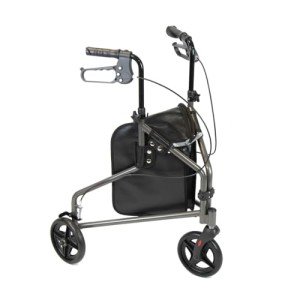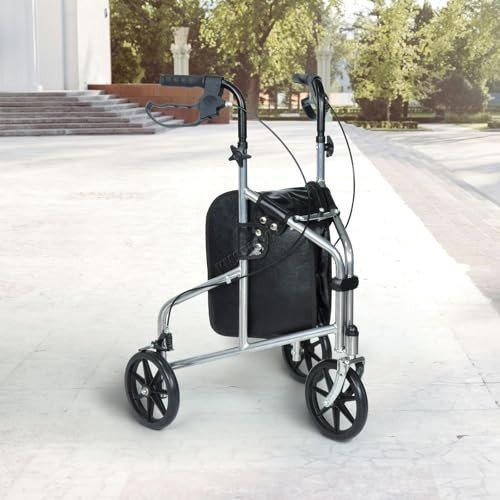The modern walker has evolved significantly over the years, transforming from a simple mobility aid into a versatile tool catering to diverse user needs. These innovative devices are not just about providing support; they embody advancements in design, functionality, and technology. As people lead increasingly active lives, the modern walker has adapted to fit various lifestyles, allowing users to maintain independence and mobility.
The Evolution of Walkers
Historically, walkers served a basic purpose: to aid individuals with mobility challenges. Early models were metal frames with simple wheels, focusing solely on providing stability. However, with a growing understanding of mobility issues and the importance of active living, modern walkers have incorporated various features.

Key Features of Modern Walkers
The following table summarizes the essential components and features of contemporary walkers:
| Feature | Description |
|---|---|
| Lightweight Frames | Made of aluminum or carbon fiber for easy handling. |
| Ergonomic Design | Adjustable handles and user-friendly grips for comfort. |
| Rolling Wheels | Forward-facing wheels that allow smooth navigation. |
| Seat Options | Many modern walkers include built-in seats for rest. |
| Storage Compartments | Pockets or baskets to carry personal items. |
| Accessories | Options for cup holders, phone holders, and more. |
As seen in the table above, modern walkers often come with an array of features that enhance usability and comfort.
Types of Modern Walkers
The variety of walkers available today reflects the diverse needs of users. Here are some common types of modern walkers:
Standard Walkers: Traditional designs that provide maximum stability, usually without wheels.
- Suitable for individuals who need support while walking but can lift the walker.
Wheeled Walkers: Also known as rollators, these come with two or four wheels, allowing for easier movement.
- Ideal for users who need a balance between support and mobility.
Knee Walkers: Designed specifically for individuals recovering from foot or ankle surgery.
- Users can rest their knee on a padded cushion while propelling themselves with the other leg.
Transport Walkers: These walkers can be converted into a lightweight wheelchair.
- Useful when the user may need assistance over long distances.
Upright Walkers: These walkers allow users to stand more upright, promoting better posture.
- They often include features that support balance and prevent falls.
Health Benefits of Using a Walker
The health benefits of utilizing a walker are numerous and can significantly enhance the quality of life for those with mobility issues. Some of these benefits include:
- Improved Balance: Walkers can provide stability, helping users feel safer while moving.
- Enhanced Mobility: With the right walker, many find they can move more freely and confidently.
- Reduced Strain: Walkers help to distribute weight evenly, reducing strain on joints and muscles.
- Social Engagement: Increased mobility can lead to more social opportunities and engagement with family and friends.
- Greater Independence: Walkers offer users the ability to navigate their environments without needing constant assistance.
Choosing the Right Walker
When selecting a walker, several factors should be taken into consideration, including:
- User Needs: Assess the level of mobility and physical limitations.
- Environment: Consider where the walker will be used most often (indoor vs. outdoor).
- Features: Identify essential features such as wheels, storage, and seating.
- Size and Weight: Ensure that the walker is appropriate for the user’s height and strength.
In addition, it may be helpful to consult a healthcare professional to determine the most suitable option for individual needs.
FAQs About Modern Walkers
1. How do I know if I need a walker?
If you experience difficulty walking, frequent falls, or feel unsteady, it may be time to consider a walker. Consulting a healthcare provider can help determine your needs.
2. Are walkers adjustable?
Yes, most modern walkers have adjustable heights to accommodate various user heights for optimal comfort and safety.
3. Can I use a walker outdoors?
Many modern walkers are designed for both indoor and outdoor use. Look for walkers with robust wheels and durable frames.
4. How do I maintain my walker?
Regularly check the frames, wheels, and brakes for wear and tear. Clean the walker as needed to keep it in good condition.
5. Are there different weight limits for walkers?
Yes, walkers come with various weight capacities. Always check the manufacturer's specifications to ensure safety.

The modern walker has come a long way, offering a lifeline for individuals who require mobility assistance. With a multitude of designs and innovations, these devices facilitate independence and improve the quality of life. From robust standard walkers to more specialized knee and transport walkers, there is a solution for every need.
Choosing the right walker can significantly impact everyday activities, allowing users to move more safely and confidently in their environments. In an increasingly active world, the modern walker is not merely a tool but a powerful ally in maintaining health, mobility, and independence.














